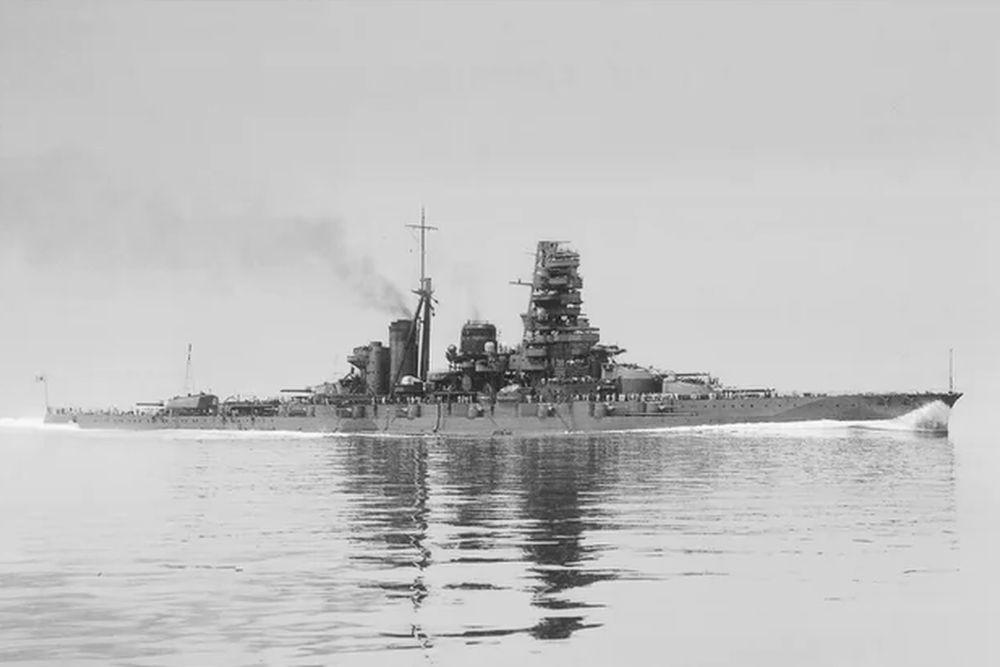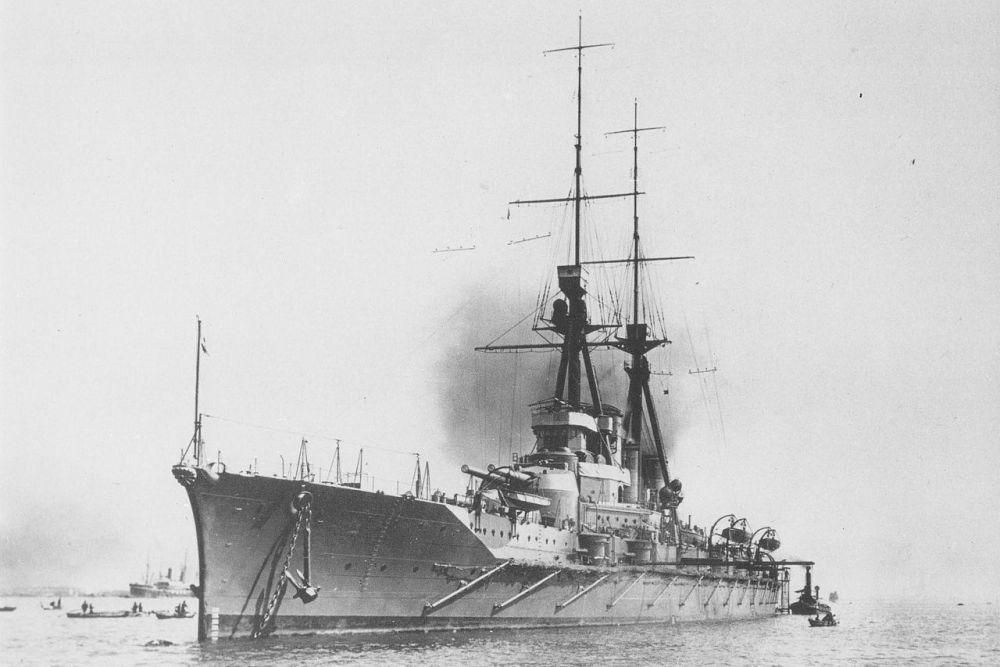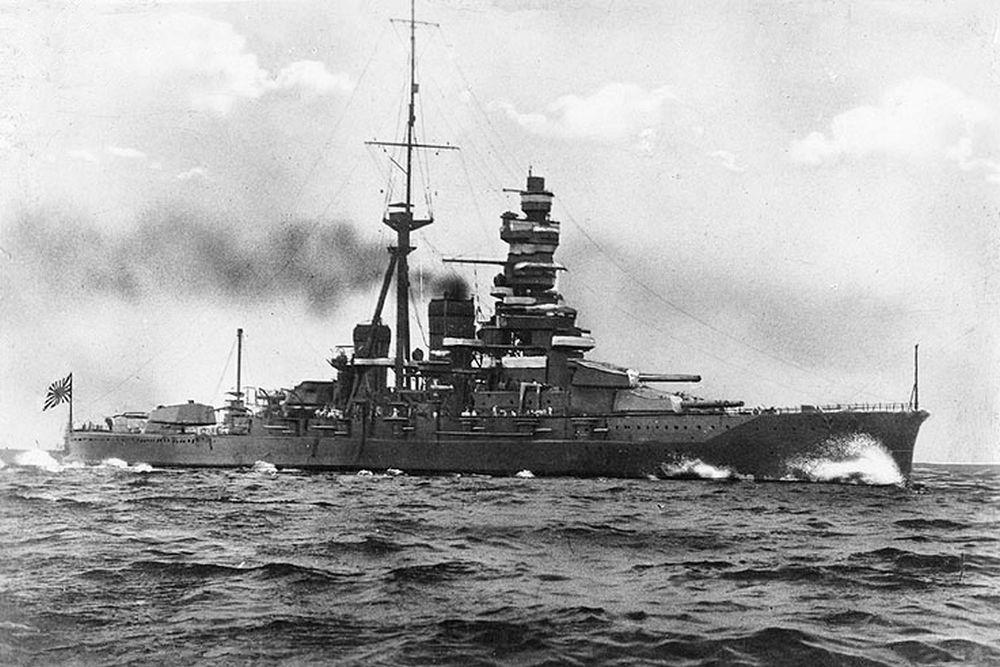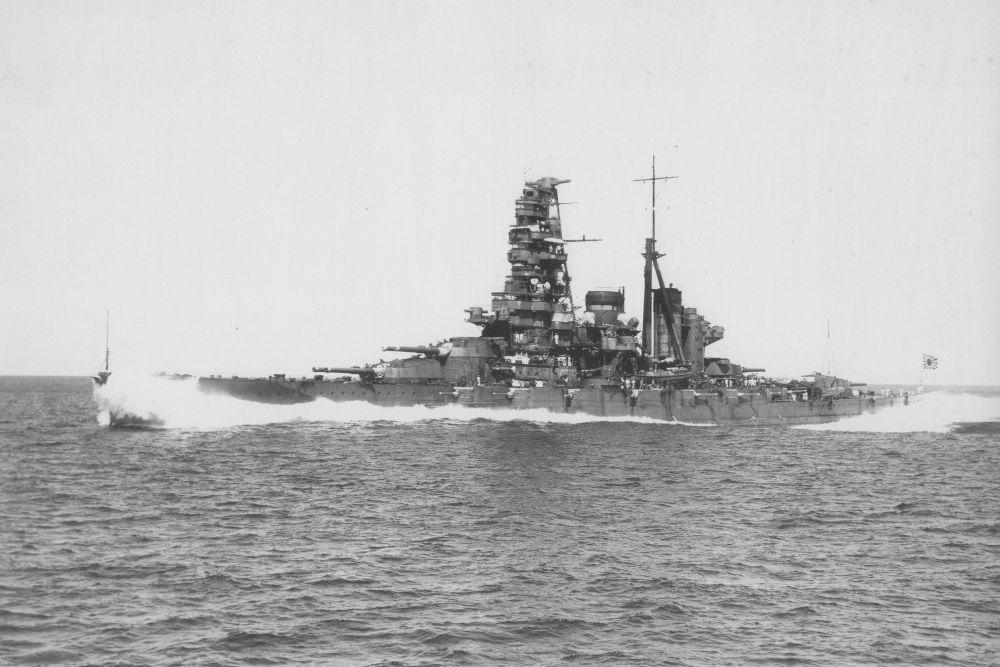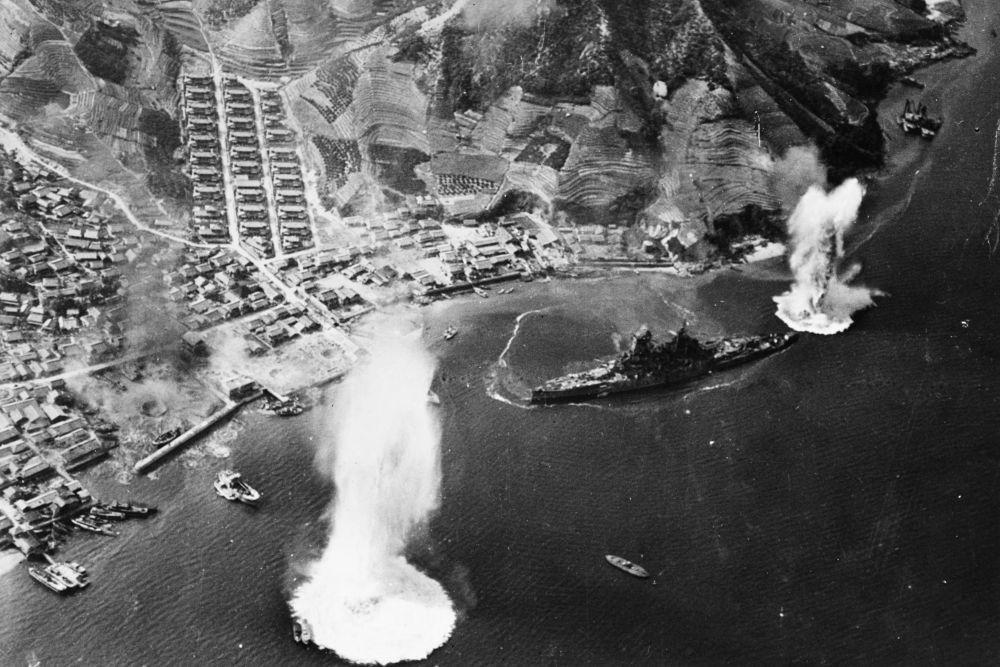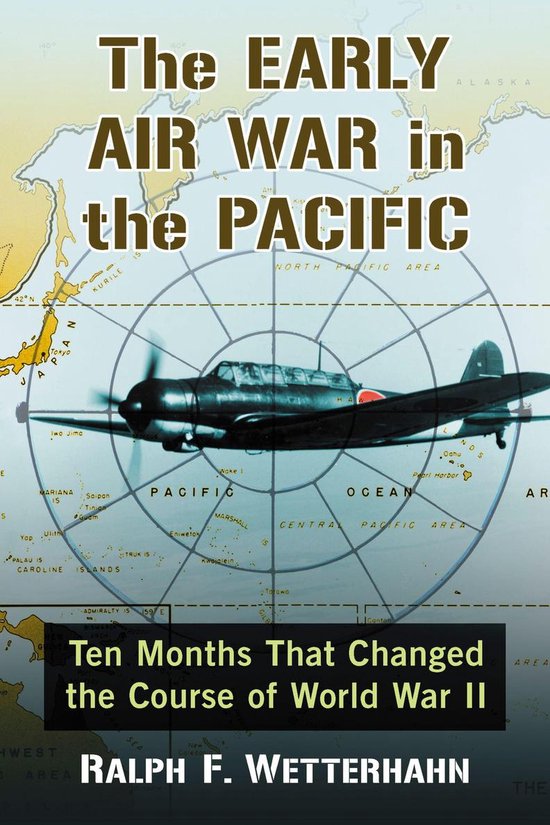Introduction
The Congo-class (1912) battlecruiser Haruna was commissioned in 1915 and already served in operations during the First World War. Between 1924 and 1928, the ship underwent a first reconstruction, followed by a second in the years 1933 and 1934 after which it was classified as a battleship. During the Second World War, the Haruna participated in the battles for Malacca and Singapore, the Dutch East Indies, various operations in the Pacific Ocean and the battle in the South Pacific. When harboured in Kure, Japan, the ship was hit for the first time in an aerial bombardment on June 12th, 1945. Two more aerial bombardments followed on June 29th and July 28th, 1945, that ultimately sank the Haruna. After the war the ship was salvaged and scrapped in 1946.
Definitielijst
- battleship
- Heavily armoured warship with very heavy artillery.
- First World War
- Took place from 1914 till 1918 and is also named The Great War. The conflict started because of increased nationalism, militarism and neo-colonialism in Europe. Two alliances battled one another during the 4-year war, which after a dynamic start, resulted into static trench warfare. The belligerents were the Triple Alliance (consisting of Great-Britain, France, and Russia; later enlarged by Italy and the USA, amongst others) on the one hand and the Central Powers (consisting of Germany, Austria-Hungary, Bulgaria and the Ottoman empire) on the other hand. The war was characterized by the huge number of casualties and the use of many new weapons (flamethrowers, aircraft, poison gas, tanks). The war ended in 1918 when Germany and its allies surrendered unconditionally.
General Information
| Shipyard: |
Keel laid: |
Launched: |
Commissioned: |
Fate: |
| Kawasaki, Kobe |
March 16th, 1912 |
December 14th, 1913 |
April 19th, 1915 |
Sunk on July 28th, 1945 |
| Hull number : ? |
||||
| Assignments: |
Date in: |
Date out: |
Division: |
|
| April 1915 |
1926 |
3rd Battleship Division | ||
| December 10th, 1928 |
November 1929 |
4th Battleship Division | ||
| November 20th, 1929 |
1933 |
1st Battleship Division | ||
| June 1st, 1936 |
December 1944 |
3rd Battleship Division | ||
| January 1st, 1945 |
July 28th, 1945 |
1st Battleship Division |
||
Definitielijst
- Battleship
- Heavily armoured warship with very heavy artillery.
History
The keel for the Congo-class (1912) battlecruiser Haruna was laid on March 16th, 1912, at the Kawasaki shipyard in Kobe. She was launched on December 14th, 1913, and completed on April 19th, 1915. It was the fourth and last ship of this class, her construction derived from a British design. The ship took her name from Mount Haruna on Honshu.[1][2]
The 222 meter long ship with a displacement of 36,600 long tons was powered by 36 Yarrow boilers and four Brown-Curtiss steam turbines, generating a speed of 26 knots (48 km/h). The main armament consisted of eight 360 mm guns in four twin turrets, two of which were positioned forward and two aft. For the secondary armament, sixteen 150 mm guns were selected in two times eight arrangements of single-barrelled gun turrets. These were all positioned in casemates that were located amidships. The armament was supplemented with eight 76 mm guns. Below the waterline were eight 530 mm torpedo launch tubes, four on each side. The armour belt had a thickness of 200 mm, the deck armour belt between 38 and 70 mm and the armour thickness of the front and sides of the gun turrets measured 230 mm.[3][4][5]
After the ship’s commissioning in Kobe on April 19th, 1915, it took part in sea trials. On December 13th, 1915, the Haruna was assigned to the 3rd Battleship Division. The Haruna left Sasebo Naval Base on April 9th, 1916, for operations in the South China Sea. When hostilities in the Pacific subsided towards the end of the First World War, she was placed in reserve. On September 12th, 1920, the ship was involved in gunnery exercises near Hokkaido when one of the guns of the No. 1 turret exploded. Seven men were killed, and the turret roof was damaged. Following the turret’s repair at the naval yard in Yokosuka, the ship was again placed in reserve.
After the First World War, the Washington Naval Treaty, co-signed by Japan, prohibited the construction of news ships with a displacement more than 35,000 long tons (36,000 tons). As a result, Japan decided to maintain and modernise all the ships of the Ise-class (1915) and the Kongo-class (1912) as well as a single Fuso-class ship (1912). Calculations showed that modernisation was feasible within the set restraints.[6]
In July 1926, the Haruna was reconstructed and upgraded in the dry dock of the naval yard in Yokosuka. In two years, the armour was strengthened and the propulsion modernised. Immediately under the water line, bulges were placed to withstand torpedo impacts. As a result, the underwater torpedo launch tubes had to disappear. Further, accommodation was made to take onboard three Nakajima E4N floatplanes. The outdated 36 Yarrow boilers were replaced by 16 modern boilers and new Brown-Curtiss steam turbines were installed. This allowed the forward funnel to be removed and the aft one to be slightly enlarged. Formally, these modifications violated the limits of the international treaties, but to circumvent the restrictions the ship was classified as a battleship as of July 1928. The improved propulsion allowed the ship to reach a speed of 29 knots (54 km/h). Completely renovated, the Haruna was assigned to the 4th Battleship Division on December 10th, 1928, and designated as the emperor’s special ship. Until the ship was reassigned to the 1st Battleship Division on November 20th, 1929, she operated between Sasebo, Port Arthur and the East China Sea. The ship was placed in reserve on December 1st, 1930.[7][8]
After Japan was condemned by the League of Nations for the invasion of Manchuria, the country withdrew from both the league and from all treaties to which it had previously committed itself. No longer bound by fleet treaties, the Haruna was docked at the naval yard in Kure on August 1st, 1933, fur further modernisations so that it would be capable to escort the new Japanese aircraft carriers. The stern was extended by 7.9 meters and the bridge was completely redesigned. The boilers were replaced by eleven oil-fired Kampon boilers and the ship received new switched turbines. Two catapults were installed for better handling of the Nakajima E8N and/or Kawanishi E7K floatplanes as her on-board aircraft. The armour was expanded again. The ship also received more extensive anti-aircraft defences. The outdated 76 mm guns were removed and replaced by eight 130 mm guns. In addition, a large number of 25 mm anti-aircraft guns were added across the entire ship. The reconstruction was completed on September 30th, 1934.[9][10]
On June 1st, 1936, the Haruna was assigned to the 3rd Battleship Division and throughout 1937 she participated in fleet exercises and patrolling the coasts of China. When the 2nd Sino-Japanese War broke out, the Haruna was immediately deployed there until the ship was placed in reserve on December 1st, 1937. On April 2nd, 1940, the ship was sent to Taiwan as a special services ship and was reassigned to the 3rd Battleship Division in March 1941.[11]
On November 29th, 1941, the Haruna, together with the Kongo (1913), departed from Hashirajima as part of the attack fleet for Malaysia. As early as December 4th, the fleet arrived at the coasts of southern Thailand and northern Malacca (Malaysia). However, the squadron with Haruna quickly withdrew after the destruction of Force Z by Japanese land-based aircraft. The squadron was then deployed to defend various supply convoys to Malacca and on December 18th, 1941, she was directed to the Philippines.[12][13]
From January 18th, 1942, the Haruna participated with the Maya (1930) and the aircraft carriers Hiryu (197) and Soryu (1935) in the Dutch East Indies campaign. This squadron operated from a position near Mindanao. From February 25th, the 3rd Battleship Division was involved in the invasion of Java. On March 7th, 1942, the Haruna took part in the bombardment of Christmas Island and then anchored in Staring Bay (Celebes, Dutch East Indies) for maintenance. The ship then sailed with the Japanese fleet to the Indian Ocean in April and took part in the attacks on Colombo, Ceylon. Once the main objective of weakening the British Eastern Fleet had been achieved, the entire 3rd Battleship Division returned home whereby the Haruna was dry-docked for maintenance in May 1942. After this maintenance, she was involved in the Battle of Midway, where the ship escaped damage and returned to Japan with survivors of the sunk Japanese aircraft carriers. After necessary maintenance, the Haruna left for Truk with the 3rd Battleship Division in September 1942. In October, the Haruna and Kongo were deployed to Guadalcanal to participate in the bombardment of Henderson Field on October 13th-14th. The ship remained around Guadalcanal with her division until the Japanese were defeated at the Battle of Guadalcanal. On November 15th, 1942, the 3rd Battleship Division returned to Truk.[14][15][16][17][18]
In 1943, the Haruna did not take part in offensive operations as she mainly protected evacuation fleets from Guadalcanal. In February 1943, the 1st Battleship Division including Haruna sailed from Truk to the naval base at Kure. The Haruna was in dry dock between February 23rd and March 31st where she received anti-aircraft guns. In May, the Haruna was to be deployed in the defence of Attu, but before the Japanese fleet was set to sail the battle was already over. In June, the Haruna was under maintenance in Yokosuka after which she sailed for Truk on September 18th, 1943. Twice a squadron including the Haruna left Truk to intercept American fleet units on their way to the Brown Islands and Wake Island but both times failed to find the enemy. On December 16th, 1943, the Haruna arrived in Sasebo for further maintenance.[19][20]
As of January 1944, the ship was stationed in Kure from where the 3rd Battleship Division left for Lingga on March 8th, 1944. On June 13th, the squadron left with a fleet for the Mariana Islands. During the battle in the Philippine Sea that took place here, the Haruna was hit by two 230 kg bombs on June 20th, 1944. On June 24th, the ship was already in dry dock and could return to Lingga in August. During the next battle at Leyte, the ship was slightly damaged on October 24th. After this, the Haruna took part in the battle of Samar where it managed to avoid further damage. On November 22nd, 1944, the Haruna ran aground on a coral reef near Lingga and was seriously damaged and she had to go to Sasebo for maintenance. During the journey to Sasebo, the squadron in which the Haruna sailed was attacked several times by American submarines and several ships, such as the Junyo (1941), were damaged. The Haruna managed to reach Sasebo without further problems on December 10th, 1944. After her repairs, the ship was sent to Kure for maintenance and renovations in late 1944.[21][22]
On January 1st, 1945, the Haruna was assigned to the 1st Battleship Division. It was thus charged with the defence of Kure on February 10th. On March 19th, 1945, the ship was slightly damaged here by an American aerial bombardment. From July 24th, 1945, the base at Kure was systematically attacked by American aircraft from Task Force 38. On that day, the Haruna was hit but escaped with minor damage. However, on July 28th, the ship was hit by eight bombs and sank at her mooring. The attack killed 65 people on board.[23][24]
The wreck of the Haruna remained in place until 1946, when it was demolished on site.
Definitielijst
- Battleship
- Heavily armoured warship with very heavy artillery.
- First World War
- Took place from 1914 till 1918 and is also named The Great War. The conflict started because of increased nationalism, militarism and neo-colonialism in Europe. Two alliances battled one another during the 4-year war, which after a dynamic start, resulted into static trench warfare. The belligerents were the Triple Alliance (consisting of Great-Britain, France, and Russia; later enlarged by Italy and the USA, amongst others) on the one hand and the Central Powers (consisting of Germany, Austria-Hungary, Bulgaria and the Ottoman empire) on the other hand. The war was characterized by the huge number of casualties and the use of many new weapons (flamethrowers, aircraft, poison gas, tanks). The war ended in 1918 when Germany and its allies surrendered unconditionally.
- invasion
- Armed incursion.
- League of Nations
- International league of Nations for cooperation and security (1920 – 1941). The League was located in Geneva, in neutral Switzerland. During the 1930s the league of nations could do little against aggressive behaviour of Japan, Manchuria, Italy, Abyssinia and Hitler. The league of nations was in fact the predecessor of the United Nations.
- Midway
- Island in the Pacific where from 4 to 6 June 1942 a battle was fought between Japan and the United States. The battle of Midway was a turning point in the war in the Pacific resulting in a heavy defeat for the Japanese.
- offensive
- Attack on a smaller or larger scale.
- squadron
- A military unit in the Belgian navy usually six to eight small ships operating together under one command. The smallest military unit in the Dutch air force of about 350 men. In most countries is the designation of a military unit thesize of a company. It is either an independent unit, such as a battery, or part of a bigger Calvary unit. In the air force it is the designation of a unit of aircrafts.
- torpedo
- A weapon of war. A cigar shaped body fitted with explosives and a propulsion and control mechanism. Intended to target after launch a nearby enemy ship and disable it by underwater explosion.
- Washington Naval Treaty
- Treaty signed on 6 February 1922 by The United States, Great Britain, France and Italy through which the countries imposed restrictions on each other concerning number, magnitude and armoury of the most important warships to prevent a new arms race.
Technical specifications
| Name: | Haruna (1915) |
| Callsign/Registration: |
? |
| Shipyard: |
Kawasaki, Kobe |
| Hull number: |
? |
| Type/Class: |
Battlecruiser - Battleship /
Kongo-class (1912) |
| Displacement: |
31,720 t (minimum) 36,600 lt (37,187 ton) (maximum) |
| Length: |
222 meter |
| Beam: |
31 meter |
| Draft: |
9.70 meter |
| Propulsion: |
4 gas turbines 8 boilers 4 shafts 13,600 shp |
| Speed: |
30 knots (56 km/h) |
| Range: |
19,000 km at 14 knots(26 km/h) |
| Armour: |
Armour belt: 203 - 279 mm Decks: 38 - 58 mm Turrets: 229 mm Barbettes: 254 mm |
| Armament: |
1913: 4x2 356 mm / 45 calibre Type 43 guns 16x1 152 mm / 50 calibre Type 41 guns 8x1 76 mm guns 4x1 6.5 mm machine guns 8x 533 mm torpedo launch tubes 1935: 4x2 356 mm / 45 calibre Type 43 guns 8x1 152 mm / 50 calibre Type 41 guns 8x1 127 mm / 40 calibre Type 89 anti-aircraft guns 20x 25 mm Type 96 anti-aircraft machine guns |
| Complement: |
1,360 |
Definitielijst
- Battleship
- Heavily armoured warship with very heavy artillery.
- torpedo
- A weapon of war. A cigar shaped body fitted with explosives and a propulsion and control mechanism. Intended to target after launch a nearby enemy ship and disable it by underwater explosion.
Commanders
| Kaigun Daisa Kajishiro Funakoshi
(Captain of the Navy) |
December 15th, 1913 |
| Kaigun Daisa Saburo Hyakutake
(Captain of the Navy) |
December 1st, 1916 |
| Kaigun Daisa Naomi Taniguchi
(Captain of the Navy) |
September 15th, 1917 |
| Kaigun Daisa Tsuneha Sano
(Captain of the Navy) |
December 1st, 1917 |
| Kaigun Daisa Shokichi Oishi (Captain of the Navy) | November 20th, 1919 |
| Kaigun Daisa Heishiro Omi (Captain of the Navy) | November 20th, 1920 |
| Kaigun Daisa Kichiji Ueda (Captain of the Navy) | November 20th, 1921 |
| Kaigun Daisa Takeshi Koyama
(Captain of the Navy) |
July 1st, 1922 |
| Kaigun Daisa Hatsuji Mori
(Captain of the Navy) |
November 10th, 1922 |
| Kaigun Daisa Chikaharu Koizumi
(Captain of the Navy) |
December 1st, 1922 |
| Kaigun Daisa Wataru Ugawa
(Captain of the Navy) |
April 15th, 1924 |
| Kaigun Daisa Hiroaki Tamura
(Captain of the Navy) |
September 1st, 1924 |
| Kaigun Daisa Naokata Kondo
(Captain of the Navy) |
December 1st, 1924 |
| Kaigun Daisa Kiyoshi Ishikawa
(Captain of the Navy) |
July 10th, 1925 |
| Kaigun Daisa Rokuya Mashiko
(Captain of the Navy) |
December 1st, 1926 |
| Kaigun Daisa Iwajiro Torin
(Captain of the Navy) |
December 1st, 1927 |
| Kaigun Daisa Kizo Isumi
(Captain of the Navy) |
December 28th, 1927 |
| Kaigun Daisa Minoru Sonoda
(Captain of the Navy) |
February 10th,1931 |
| Kaigun Daisa Tokutaro Sumiyama
(Captain of the Navy) |
December 1st, 1931 |
| Kaigun Daisa Eikichi Katagiri
(Captain of the Navy) |
November 15th, 1932 |
| Kaigun Daisa Shunzo Mito
(Captain of the Navy) |
November 15th, 1933 |
| Kaigun Daisa Yasutaro Iwashita
(Captain of the Navy) |
April 16th, 1935 |
| Kaigun Daisa Jisaburo Ozawa
(Captain of the Navy) |
October 28th, 1935 |
| Kaigun Daisa Seiichi
Ito (Captain of the Navy) |
December 1st, 1936 |
| Kaigun Daisa Kenshiro Oshima (Captain of the Navy) | November 15th, 1937 |
| Kaigun Daisa Risaburo Fujita
(Captain of the Navy) |
July 15th, 1938 |
| Kaigun Daisa Shoji
Nishimura (Captain of the Navy) |
May 18th, 1939 |
| Kaigun Daisa Susumu Kimura (Captain of the Navy) | November 1st, 1940 |
| Kaigun Daisa Tamotsu Takama (Captain of the Navy) | August 20th, 1941 |
| Kaigun Daisa Keishi Ishii (Captain of the Navy) | June 20th, 1942 |
| Kaigun Daisa Nobue Morishita (Captain of the Navy) | June 14th, 1943 |
| Kaigun Daisa Kazue Shigenaga
(Captain of the Navy) |
January 25th, 1944 |
| Kaigun Daisa Matake Yoshimura
(Captain of the Navy) |
December 20th, 1944 |
Notes
- Gray, 1984, pag. 234
- Jackson, 2008, pag. 27
- Jackson, 2000, pag. 48
- Stille, 2008, pag. 16
- Jackson, 2008, pag. 27
- Jackson, 2000, pag. 68-69
- Jackson, 2008, pag. 27
- Stille, 2008, pag. 16
- Stille, 2008, pag. 16-18
- Jackson, 2008, pag. 2
- Willmott, 2002, pag. 23-24
- Stille, 2008, pag. 19
- Willmott, 2002, pag. 56
- Stille, 2008, pag. 19
- Jackson, 2008, pag. 2
- Boyle, 1998, pag. 368-370
- Willmott, 2002, pag. 93
- Schom, 2004, pag. 382
- Jackson, 2008, pag. 27
- Swanston, 2008, pag. 223
- Willmott, 2002, pag. 141
- Steinberg, 1979, pag. 49
- Jackson, 2000, pag. 128
- Stille, 2008, pag. 20
Information
- Article by:
- Wilco Vermeer
- Translated by:
- Simon van der Meulen
- Published on:
- 17-02-2025
- Feedback?
- Send it!
Related books
Sources
- BOYLE, D., World War II in Photographs, Rebo Productions, 1998.
- GRAY, R., Conway's All The World's Fighting Ships, 1906-1921, Bloomsbury Publishing Plc., 1984.
- JACKSON, R., 101 Great Warships, Amber Books, 2008.
- JACKSON, R., The World's Great Battleships, Greenwich Editions, Londen, 2000.
- SCHOM, A., The Eagle and the Rising Sun, W. W. Norton, Incorporated, 2004.
- STEINBERG, R., Return to the Philippines, Time-Life Books, 1979.
- STILLE, M., Imperial Japanese Navy Battleships 1941-45, Bloomsbury USA, 2008.
- SWANSTON, A., The Historical Atlas of World War II, Book Sales, 2008.
- WETTERHAHN, R.F., The Early Air War in the Pacific, McFarland, 2019.
- WILLMOTT, H.P., The Second World War in the Far East, Smithsonian Books, 2004.
